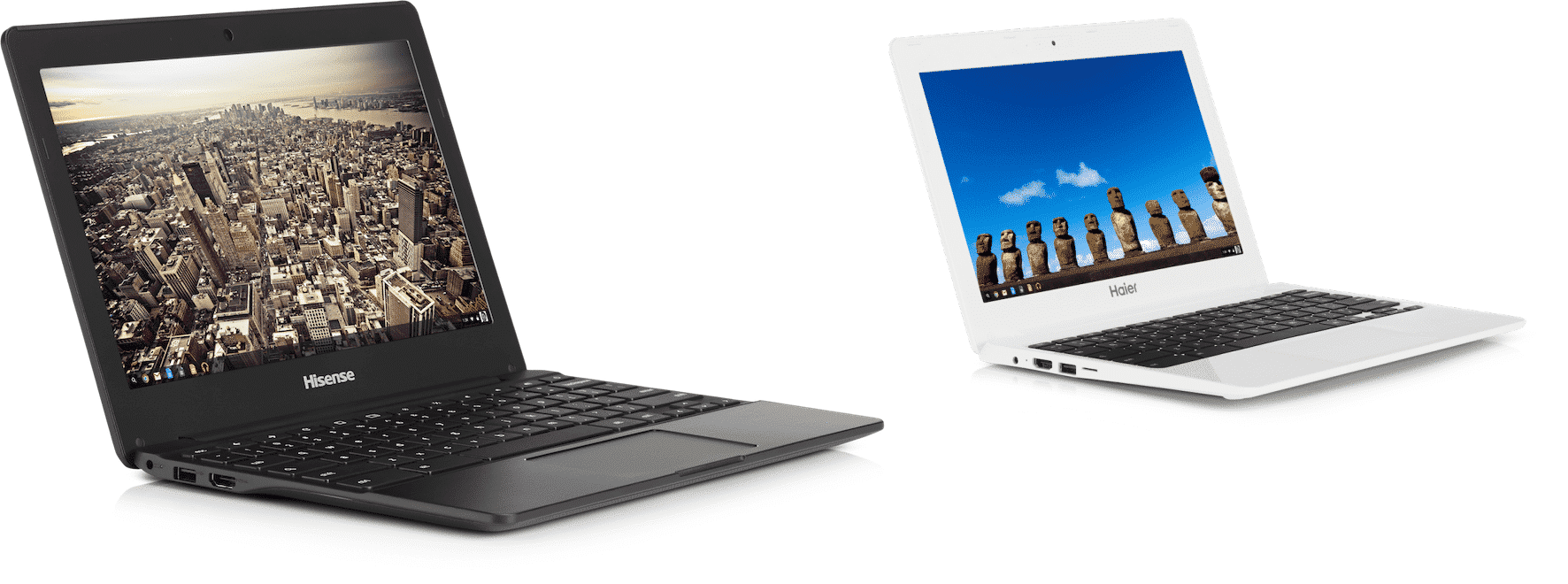Chromebook runs on Google’s web-based Chrome OS and it is designed to be used with an Internet connection. Google by default provides 100 GB of cloud storage for every Chromebook because documents and apps are automatically saved in the cloud. All these products are in the low-cost range. Here is a brief introduction to all these new members of Chrome OS:
ASUS Chromebit: This Chromebit is actually a smaller Chromebook, it resembles a stick in which all the major components of a Google’s browser-based laptop has been packed including a 2GB RAM, Rockchip’s 3288 processor and 16GB of storage and it is a dongle which when attached to a TV or any display can convert the same into a Chrome OS computer.
The size of this Chromebit is smaller than iPhone6. The Chromebit has 2 ports: HDMI and USB. The HDMI port will connect Chromebit to an external display and USB 2.0 port will be used for power supply and other peripherals like keyboard and mouse. The Chromebit also has Bluetooth connectivity and the peripherals can be connected via Bluetooth also. Asus Chromebit will be ready for sale this summer. The Chromebit is an answer to upgrade any existing desktop and would be available for a price of $100.
ASUS Chromebook flip: For users looking out for a low-cost traditional tablet or laptop ASUS Chromebook flip would be the right answer.
This is an all-metal, lightweight as it weighs less than 2 pounds and ultra-portable. It is 360-degree convertible and hence can be used as Tablet, Laptop or even trackpad. By flipping the screen users can get the tablet. This device has an 11.6-inch touch screen and 4GB RAM, 16GB of internal storage and a battery that can run for 10 hours. The operating system’s user interface changes depending upon the mode i.e. if it is being used as a tablet then the virtual keyboard pops up, the device also supports handwriting recognition. This will be ready for sale around spring and for a price of $249. Technical specs for Hisense Chromebook and Haier Chromebook 11: Both the devices have Rockchip’s 3288 processor, 2GB of RAM and 16GB of storage which is actually on the lower end of the spectrum however the low cost at which the Chromebook is being made available is very impressive. Basically Google is targeting the educational sector and the upcoming retail markets in countries like Mexico, India, and Thailand by introducing these low-cost Chromebooks. All these new Chromebooks will have the latest features of the Chrome OS including the Smart Lock feature wherein Android users can unlock their Chromebooks using their smartphones. Further, Chromebook owners will also be able to see various Android apps on their Chromebooks. Google is also planning to launch a total 10 Chromebooks by the end of this year including the ones that have been discussed here. It is really interesting to see that Google and its partners have joined hands to create new low-cost Chromebooks using the cheap Rockchip’s 3288 processor.
